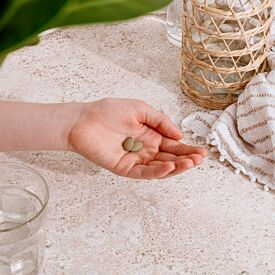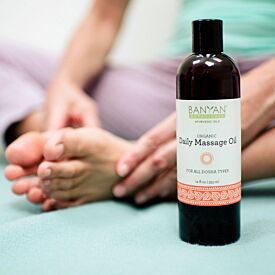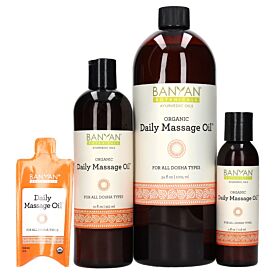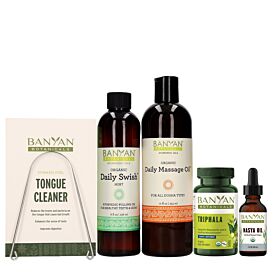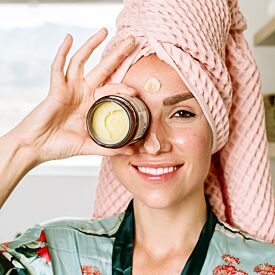Pose of the Day: Cobra Pose
Cobra Pose (Bhujangasana) is the antidote to our device-operating, chair-bound, societal ways. It is a back-bending asana where the majority of the movement comes from the thoracic spine, a place where our culture has become limited in motion. With its expansiveness across the chest, it earns its merit as a “heart opener,” but its name “cobra” comes from its shape, which is reflective of a serpent.
Through the Ayurvedic Lens
All backbends are considered pacifying to kapha dosha. The primary site of kapha is in the chest, so creating movement here is both stimulating and balancing to the water and earth elements.
Cobra is a grounded backbend since most of the body stays connected to the earth. This creates a unique involvement of gunas that you may not find in other backbends, such as Upward Bow (Urdhva Dhanurasana). With the pelvis and lower body staying rooted, there is a feeling of stability and heaviness that contrasts the mobility and lightness in the upper body.
Backbends can open the heart in a physical and emotional way, but this can also be accompanied by vulnerability. Because Cobra faces down on the mat there is less susceptibility for this.
As your upper body lifts, you’ll feel slight pressure across your abdomen. This can create a physical stimulation of your digestion and help aid in elimination and relief of bloating and gas.
How to Practice
Cobra is often used as a transitional backend, commonly placed between lowering to and lifting from the floor via Plank Pose and Four-Limbed Staff Pose (Chaturanga Dandasana). It can be practiced as a connecting piece or independently, but the starting point is always face down on your mat.
From this prone position, slide your hands alongside your body to mid-ribcage level. As you do this, you’ll feel a natural change in the placement of your shoulders, bringing you from potential shoulder shrug to a more elongated neck. Keep the top of each foot pressing into the mat and begin to roll your shoulders back. Initiating the movement from your shoulders makes certain the bend comes from the thoracic spine rather than your neck.
Continue to reach forward with your sternum and heart as you softly draw your shoulder blades together and downward. Maintain space at the base of your skull by looking ahead instead of looking up. Throughout the asana, be sure your feet and pelvis stay connected to the mat. Your hands also stay anchored and assist but don’t act as the primary mover. As your spinal muscles do the lifting, the focus should be on the extension in your upper back, not the amount of height off the mat. From the peak of your movement, slowly lower back to your starting point. Try again, this time integrating your breath. Inhale as you lengthen to lift. Exhale as you lower back to the mat.
Variations or Modifications
Cobra is considered a beginner backbend and is an alternative to Upward-Facing Dog (Urdhva Mukha Svanasana). Because there is relatively little movement in the asana, modifications are rarely needed. In the event of feeling compression in your lower back, emphasize the downward action of your feet and limit the height of your chest. If you feel limited in the stretch across your chest and shoulders, try moving your hands out wide at shoulder level. Here, you can press into your fingertips to aid in extending your spine.
Contraindications
Contraindications for this pose are limited to those that shouldn’t be putting pressure on their abdomen, such as in the case of pregnancy. This will also be a difficult asana to practice if getting up and down from the floor can be a struggle.
Counter-Balancing Pose
A natural counter-balance to Cobra is Child’s Pose (Balasana). You can simply push with your hands and bend your knees to shift your weight back to your heels. Keep your arms stretching forward so that your sides continue to stretch and so the openness you created in Cobra does not get lost.




